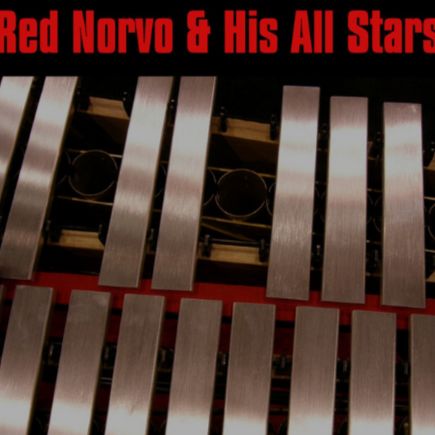I Surrender, Dear: une ballade devenue terrain de jazz
Composée en 1931 par Harry Barris, avec des paroles de Gordon Clifford, I Surrender, Dear s’est imposée comme l’un des standards les plus emblématiques du répertoire jazz. Popularisée dès sa création par Bing Crosby, qui en fit l’un de ses premiers grands succès radiophoniques, la chanson fut rapidement adoptée par les musiciens de jazz. Cette même année, Louis Armstrong fut le premier chanteur de jazz à l’enregistrer, confirmant son potentiel expressif au-delà de la simple chanson populaire.
Ballade romantique par excellence, I Surrender, Dear illustre parfaitement l’esthétique des années 1930, avec sa mélodie limpide, touchante et ses progressions harmoniques riches, propices à l’émotion. Pourtant, c’est dans l’univers du jazz qu’elle déploie toute sa profondeur. La souplesse de sa structure harmonique en fait un support idéal pour l’improvisation, ouvrant un espace d’interprétation très libre, où chaque musicien peut modeler l’atmosphère à son image.
Red Norvo, la douceur raffinée du swing
Enregistrée à New York le 26 septembre 1934, l’interprétation de I Surrender, Dear par le Swing Septet du xylophoniste Red Norvo — présente sur l’album Red Norvo And His All Stars (1968) — figure parmi les témoignages les plus élégants de l’entre-deux-guerres.
Red Norvo, à la différence des vibraphonistes qui marqueront la décennie suivante, choisit le xylophone, instrument rare dans le jazz, dont il exploite toutes les nuances percussives et harmoniques. Son style clair et chantant, souvent comparé à une voix intérieure du swing, donne à chaque morceau une dimension intime et poétique. Dans I Surrender, Dear, Red Norvo déploie une interprétation d’une rare délicatesse, où chaque note semble suspendue entre mélancolie et apaisement.
L’arrangement du Swing Septet illustre parfaitement l’esprit du jazz des années 1930: un dialogue constant entre les instruments, une attention à la texture sonore et une économie de moyens qui renforce la profondeur expressive. Le xylophone, au timbre cristallin, s’entrelace avec les vents dans un jeu d’échos et de respirations. L’équilibre entre écriture et improvisation reflète le raffinement du swing naissant, où l’émotion ne réside plus seulement dans la virtuosité, mais dans la justesse du ton et la clarté de la forme.
I Surrender, Dear: una balada convertida en terreno de jazz
Compuesta en 1931 por Harry Barris, con letra de Gordon Clifford, I Surrender, Dear se ha consolidado como uno de los estándares más emblemáticos del repertorio jazzístico. Popularizada desde su creación por Bing Crosby, quien la convirtió en uno de sus primeros grandes éxitos radiofónicos, la canción fue rápidamente adoptada por los músicos de jazz. Ese mismo año, Louis Armstrong fue el primer cantante de jazz en grabarla, confirmando su potencial expresivo más allá de la canción popular.
Balada romántica por excelencia, I Surrender, Dear representa a la perfección la estética de los años treinta, con una melodía clara y conmovedora, y progresiones armónicas ricas, propicias a la emoción. Sin embargo, es en el universo del jazz donde despliega toda su profundidad. La flexibilidad de su estructura armónica la convierte en un soporte ideal para la improvisación, abriendo un espacio de interpretación libre donde cada músico puede moldear la atmósfera a su manera.
Red Norvo, la delicadeza refinada del swing
Grabada en Nueva York el 26 de septiembre de 1934, la interpretación de I Surrender, Dear por el Swing Septet del xilofonista Red Norvo —incluida en el álbum Red Norvo And His All Stars (1968)— se cuenta entre los testimonios más elegantes del período de entreguerras.
A diferencia de los vibrafonistas que marcarían la década siguiente, Red Norvo eligió el xilófono, un instrumento poco común en el jazz, del que supo extraer toda su riqueza percusiva y armónica. Su estilo claro y cantabile, a menudo comparado con una voz interior del swing, confiere a cada pieza una dimensión íntima y poética. En I Surrender, Dear, Norvo despliega una interpretación de rara delicadeza, en la que cada nota parece suspendida entre la melancolía y la serenidad.
El arreglo del Swing Septet ilustra a la perfección el espíritu del jazz de los años treinta: un diálogo constante entre los instrumentos, una atención minuciosa a la textura sonora y una economía de medios que intensifica la expresión. El xilófono, con su timbre cristalino, se entrelaza con los vientos en un juego de ecos y respiraciones. El equilibrio entre escritura e improvisación refleja el refinamiento del swing naciente, donde la emoción ya no reside solo en la virtuosidad, sino en la precisión del tono y la claridad de la forma.
I Surrender, Dear: una ballata divenuta terreno per il jazz
Composta nel 1931 da Harry Barris, con testi di Gordon Clifford, I Surrender, Dear si è imposta come uno degli standard più emblematici del repertorio jazz. Resa popolare fin dalla sua uscita da Bing Crosby, che la trasformò in uno dei suoi primi grandi successi radiofonici, la canzone fu rapidamente adottata dai musicisti jazz. Nello stesso anno, Louis Armstrong fu il primo cantante jazz a registrarne una versione, confermando il potenziale espressivo del brano al di là della semplice canzone popolare.
Ballata romantica per eccellenza, I Surrender, Dear incarna pienamente l’estetica degli anni Trenta, con una melodia limpida e toccante e progressioni armoniche ricche e cariche di emozione. Tuttavia, è nel mondo del jazz che il brano rivela tutta la sua profondità. La flessibilità della sua struttura armonica lo rende un supporto ideale per l’improvvisazione, offrendo uno spazio interpretativo libero in cui ogni musicista può modellare l’atmosfera secondo il proprio linguaggio.
Red Norvo, la dolcezza raffinata dello swing
Registrata a New York il 26 settembre 1934, l’interpretazione di I Surrender, Dear dello Swing Septet dello xilofonista Red Norvo — inclusa nell’album Red Norvo And His All Stars (1968) — rappresenta una delle testimonianze più eleganti dell’epoca tra le due guerre.
Diversamente dai vibrafonisti che avrebbero segnato il decennio successivo, Red Norvo scelse lo xilofono, strumento raro nel jazz, di cui esplorò tutte le sfumature percussive e armoniche. Il suo stile limpido e melodioso, spesso paragonato a una voce interiore dello swing, dona a ogni brano una dimensione intima e poetica. In I Surrender, Dear, Norvo offre un’interpretazione di straordinaria delicatezza, in cui ogni nota sembra sospesa tra malinconia e serenità.
L’arrangiamento dello Swing Septet illustra perfettamente lo spirito del jazz degli anni Trenta: un dialogo costante tra gli strumenti, un’attenzione alla tessitura sonora e un’economia di mezzi che accresce la profondità espressiva. Lo xilofono, dal timbro cristallino, si intreccia con i fiati in un gioco di echi e respiri. L’equilibrio tra scrittura e improvvisazione riflette il raffinato swing nascente, in cui l’emozione non risiede più soltanto nella virtuosità, ma nella precisione del tono e nella chiarezza della forma.
I Surrender, Dear: a ballad turned jazz playground
Composed in 1931 by Harry Barris, with lyrics by Gordon Clifford, I Surrender, Dear has become one of the most iconic standards in the jazz repertoire. Popularized from the outset by Bing Crosby, who made it one of his first major radio hits, the song was quickly embraced by jazz musicians. That same year, Louis Armstrong became the first jazz singer to record it, confirming its expressive potential beyond the realm of popular song.
A quintessential romantic ballad, I Surrender, Dear perfectly captures the aesthetic of the 1930s, with a clear, touching melody and rich harmonic progressions that invite emotion. Yet it is within the world of jazz that the tune reveals its full depth. The flexibility of its harmonic structure makes it an ideal vehicle for improvisation, offering a spacious interpretive canvas where each musician can shape the mood in their own image.
Red Norvo, the refined softness of swing
Recorded in New York on September 26, 1934, the interpretation of I Surrender, Dear by xylophonist Red Norvo’s Swing Septet — featured on the album Red Norvo And His All Stars (1968) — stands as one of the most elegant examples of the interwar jazz era.
Unlike the vibraphonists who would define the following decade, Red Norvo chose the xylophone, a rare instrument in jazz, from which he drew a full range of percussive and harmonic nuances. His clear, singing style, often compared to an inner voice of swing, lends each piece an intimate and poetic quality. In I Surrender, Dear, Norvo delivers a performance of exquisite delicacy, where every note seems suspended between melancholy and calm.
The Swing Septet’s arrangement perfectly captures the spirit of 1930s jazz: a continuous dialogue between instruments, careful attention to texture, and an economy of means that heightens expressive depth. The xylophone, with its crystalline timbre, intertwines with the horns in a subtle play of echoes and breaths. The balance between composition and improvisation reflects the refinement of early swing, where emotion arises not only from virtuosity, but from precision of tone and clarity of form.


